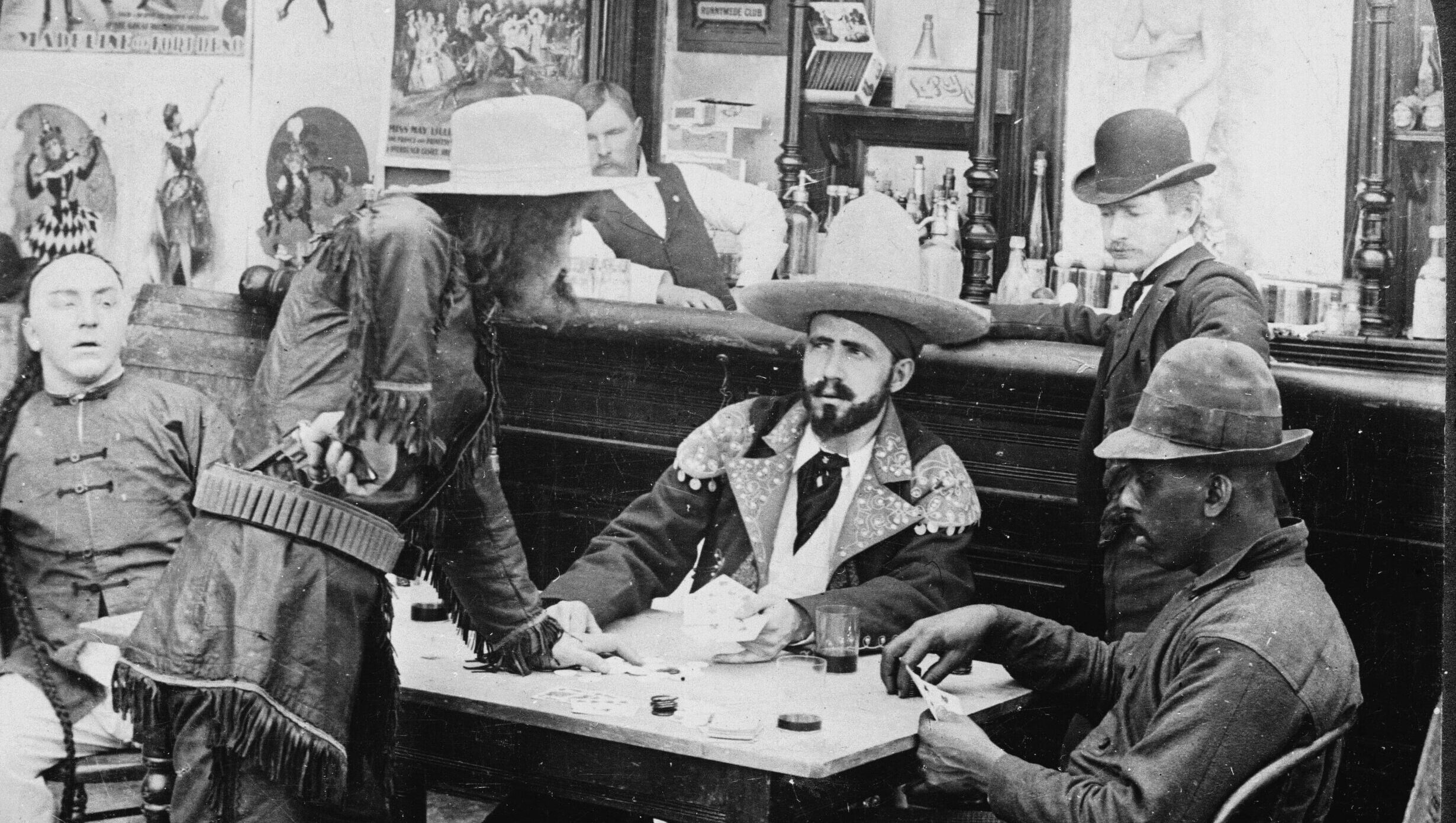A Brief History of the Cold War
By Lee Edwards and Elizabeth Edwards Spalding
(Washington, DC: Regnery History, 2016)
At 262 pages, including notes, bibliography, and index, this is indeed a brief history of the global struggle between liberal democracy and communist tyranny that characterized the second half of the twentieth century. Its brevity will make it accessible to young readers, many of whom will have no recollection of the Cold War and who may have been told by their teachers that there was moral equivalence between the two sides. The authors are thus to be congratulated on a highly readable account that includes descriptions of the main events, phases, personalities, issues, and strategies involved. Above all, they emphasize that history’s outcomes are not determined just by impersonal forces but that ideas and good leadership matter.
Edwards and Spalding argue that America won the Cold War because its free society and market economy provided a better standard of living for its citizens while also maintaining military superiority over the Soviet Union. The latter’s centrally planned and bureaucratized economy thwarted initiative, causing it to lag both in the production of consumer goods and heavy industry. Living standards were low and only a widespread black market kept them from becoming dire. Stagnation in manufacturing and technology development meant that the Soviets would fall behind in the arms race.
As for leadership, Edwards and Spalding give special praise to Harry Truman and Ronald Reagan. For them, Truman was “the First Cold Warrior.” Taking over the presidency from Franklin D. Roosevelt after the latter’s sudden death in April 1945, he was quick to perceive that Stalin was violating all the pledges he had made at Yalta to allow democratic elections in Eastern Europe. There were also warnings in early 1946 from George Kennan, the deputy chief of mission in Moscow, and from Winston Churchill in his “Iron Curtain” speech about Stalin’s plans to expand Soviet power. Truman’s response was “containment,” a term coined later by Kennan. When the Soviets tried in 1947 to destabilize Greece and Turkey, Truman pushed back with military and economic aid; when they blocked American land access to West Berlin, he responded by airlifting goods to the West Berliners. Next came the Marshall Plan to stabilize Western European economies through large-scale economic aid; and after that the military alliance called the North Atlantic Treaty Organization.
Containment was less successful in Asia. After a long civil war in China, the communists, led by Mao Zedong, finally triumphed over the pro-American Chiang Kai-shek. Edwards and Spalding (21, 55) credit Mao’s victory to sympathetic elements in the U.S. State Department who convinced Truman that Chiang was hopelessly corrupt and succeeded in getting an arms embargo imposed on him. However, readers should consult also Forrest C. Pogue’s George C. Marshall: Statesman 1945–1959 (258–76) and David McCullough’s Truman (742–44), both of which assert that Chiang had received—and squandered—huge amounts of U.S. military equipment and economic aid since the defeat of Japan.
Nevertheless, Truman was excoriated at the time for “losing China” and was to become more unpopular over the Korean War, which broke out in mid-1950 when communist North Korea invaded the South. Truman appealed to the United Nations Security Council, which, with the Russians absent, agreed to help South Korea. Under the leadership of General Douglas MacArthur, Allied forces soon drove the enemy back; but then China entered the war to prevent a North Korean collapse. MacArthur publicly called for expanding the war into China; but Truman, who wanted no wider commitment on the Asian continent, dismissed him—only to be engulfed in another tidal wave of vilification. By the time the war ended inconclusively, in March 1953, Truman was out of office and completely out of favor. In hindsight, though, Edwards and Spalding conclude that Truman was vindicated by “the eventual remarkable economic success and vibrant democracy of South Korea.”
One of this book’s best features is the way it discusses the strategic options that American presidents faced. Hawkish conservative opinion called for liberating the captive nations, but this was ruled out as too dangerous after the USSR got the atomic bomb in 1949 (China was to get its A-bomb in 1964). A mutually destructive nuclear holocaust was simply unthinkable. Therefore, President Eisenhower sent no help when the East Germans rebelled against Soviet domination in 1953, or when the Hungarians and Poles did the same in 1956. And when the British and Israelis invaded Egypt in 1956, Eisenhower ordered them to withdraw rather than provoke a war with the USSR, which supported Egypt’s President Nasser.
The new strategy, called “global deterrence,” was really just a more proactive form of “containment.” It meant expanding America’s treaty commitments. For Asia, there was the Southeast Asian Treaty Organization (SEATO); for the Middle East, there was the Baghdad Pact; and for Latin America, the Rio (de Janeiro) Pact. In the Western Hemisphere, Eisenhower was willing to use covert means to liberate countries under communist rule. A CIA-backed rebellion ousted the government of Guatemala in 1954; and when Eisenhower was leaving office, in 1960, plans, were in progress to use Cuban exiles to overturn Fidel Castro’s recently installed regime. It was left to President John F. Kennedy to put those plans into action, but he did so only halfheartedly. The Bay of Pigs invasion became a fiasco, but the humiliated president partly redeemed himself a year later when he risked a confrontation with the Soviets and forced them to remove their missiles from Cuba. Edwards and Spalding point out, however, that this “victory” was offset by Kennedy’s agreeing, as compensation, to remove American missiles from Turkey and promising never to invade Cuba.
Meanwhile, Kennedy had begun sending American forces to South Vietnam, which was under attack from the communist north. Truman and Eisenhower had limited their assistance mainly to money and equipment in order to avoid another land war in Asia; but under Kennedy, U.S. troop involvement rose from 1,000 early in his presidency to around 16,000 by the time of his death in November 1963. Under Lyndon B. Johnson, his successor, that number rose to more than half a million. Unlike the Korean War, this time the United States acted unilaterally: a serious mistake, Edwards and Spalding argue, because friends and allies matter in war. The U.S. had little support for its cause, and despite its military superiority the North Vietnamese would not give in. Instead, the American public and the American media became war-weary. Johnson’s successor in the White House, Richard Nixon, sought to extricate the U.S. by encouraging the South Vietnamese army to take more initiative, but he was overwhelmed by the Watergate scandal and forced to resign. South Vietnam fell in May 1975.
The agony of Vietnam revealed the limits of American power and dealt a blow to the nation’s confidence. Even before Nixon departed from office, his secretary of state, Henry Kissinger, was setting a new strategic course, one he called “détente.” In Kissinger’s view, “containment” worked in the Soviets’ favor because all they had to do was encourage a revolt in some Third World country and the Americans would commit great sums of money and lots of American lives to counter it. It cost the Soviets little, but it drained America’s strength. Détente, he argued, was more realistic. It accepted the existence of communist regimes as an inescapable evil but sought to transform them from being agents of revolution to upholders of a stable international order. Rather than a bipolar world, Kissinger foresaw the emergence of a multipolar system as the European Union took over some responsibility for leadership in the West and as China and the USSR turned into rivals for leadership in the communist bloc. As secretary of state he convinced Nixon to go to China to meet Mao and assure him that America would support him in defying the Russians.
In brief, détente accepted a brokered international status quo and sought to dampen down the Cold War by substituting diplomacy for combat. There was a superficial logic to the strategy because after Stalin’s death, in 1953, the USSR’s new leaders seemed less aggressive and more willing to negotiate arms limitation agreements. But behind the façade of “peaceful coexistence,” they were training and arming revolutions throughout the Third World. As America reduced defense spending in the 1970s, communist regimes took over Angola, Ethiopia, and Nicaragua. Soviet expansionism climaxed at the end of the decade with an invasion of Afghanistan.
According to Edwards and Spalding, Ronald Reagan’s election to the presidency in 1980 marked a radical change in American strategy. Not content with merely managing the Cold War, as containment and détente did, he intended to fight it. For him, as for Truman, the Cold War was a moral struggle between Western freedom and communist tyranny. A famous remark summarized his intentions: “We win; they lose.” The authors explain that his confidence in victory lay in his analysis of the Soviet Union’s fundamental economic weakness and its spiritual hollowness. Its expanding empire thus rested on a very weak base that could not withstand a determined challenge from a free, democratic West with its superior resources and dynamism.
Reagan began by financing anticommunist insurrections against regimes in Angola, Ethiopia, Nicaragua, and—most important—Afghanistan. In trying to preserve its satellite regime in Afghanistan, the USSR had gotten bogged down in a quagmire, much as the Americans did in Vietnam. It was taking its toll in lives and money, and the costs were rising as Reagan increased American aid to the anticommunist rebels. At the same time, he sought to drive down the international price of oil, upon which the Soviets depended for most of their export revenues. He also launched an arms buildup that included installing missile systems in Western Europe and proposed building an antiballistic missile shield, called the Strategic Defense Initiative (SDI), that would block the USSR’s ability to retaliate against the U.S. in case of war. Reagan’s assumptions about the Soviet system’s rottenness proved correct: such a comprehensive offense was too much for it to counter. By March 1985 the Soviet economy was in such a crisis that the Communist Party named a new secretary, Mikhail Gorbachev, to undertake drastic reforms.
We already know how the story ended. Gorbachev tried to restructure the bureaucratized economy (perestroika) and encourage criticism of the Party and State (glasnost). But, the authors observe, he “was never able to anticipate the inevitable outcome of the powerful forces he was unleashing.” He underestimated the strength of nationalist feelings among the Eastern European satellites and even among some components of the USSR, such as the Baltic republics and Ukraine. He also underestimated how cynical Russians had become about the utopian promises of communism and how far Western ideas about freedom and democracy had spread. In 1989, which Edwards and Spalding call “The Year of Miracles,” Poland, Hungary, Czechoslovakia, East Germany, and Romania rejected their communist governments while Gorbachev did nothing. In the following year, as Germany reunified, the Soviet Union began to break up. Boris Yeltsin became president of the Russian component of the crumbling USSR, promising to dismantle the Union and abolish the Communist Party. Later that year he rescued Gorbachev from a coup by the Stalinist hardliners in the Party. Nonetheless, on Christmas Day, 1991, Gorbachev resigned as president of the Soviet Union and formally declared an end to the Cold War.
In his resignation speech Gorbachev admitted that Marxism-Leninism had failed. The authors relate that “when Gorbachev reached for the pen to sign the document officially terminating the USSR, he discovered it had no ink. He had to borrow a pen from the CNN television crew covering the event.” It was a fitting end for the “Evil Empire,” as Ronald Reagan called it. And for Edwards and Spalding the chief hero of the story was Reagan himself, “who came into office with a clear set of ideas” and who then “effectively wrote finis to the Cold War.”
A Brief History of the Cold War would be a good choice for an undergraduate class in international relations or American history. But, given its conservative, pro-American, anti-Marxist orientation, I rather doubt that many college professors will adopt it. ♦
Paul H. Lewis is emeritus professor of political science at Tulane University.














